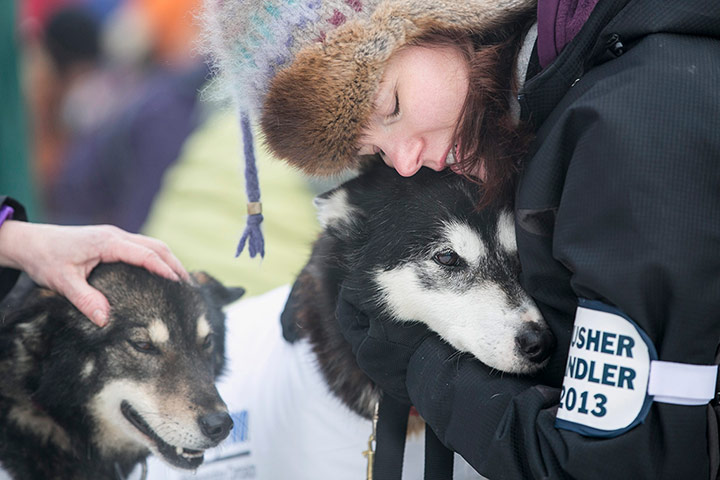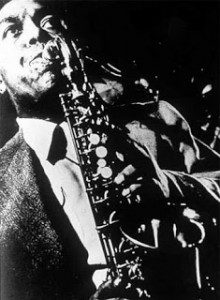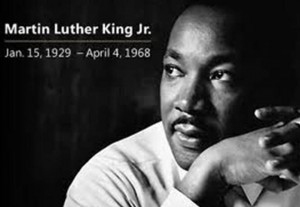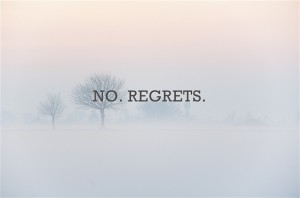2 Small Things that Make the Biggest Difference
Age wrinkles the body. Quitting wrinkles the soul. – Douglas MacArthur
Imagine a race in which you don’t know where the course is, what you might be asked to do along the way, or even how long the race will last. Imagine that when you sign up for this race, you are told, immediately and repeatedly, to quit before you even start.
You are warned you might die. And even if you don’t die, you don’t have what it takes to finish anyway, so you shouldn’t bother showing up. The emails from the race director say “Stay home. You don’t have what it takes.”
The brochure reads:
A positive outlook on life is mandatory. Whiners and complainers need not to apply. This is not the race for you. Awards will be presented to those that finish. We don’t plan on handing out too much. No refunds.
During the course of this “race” which has no finish line, you may be asked to dig up a tree stump with your bare hands and then drag it ten miles to the top of a mountain, where you will be greeted by someone who asks you to memorize poetry. You then drag the tree stump down the mountain six miles to somewhere and recite the lines. You get it wrong. You hike six miles back to memorize it until you get it right.
The 2013 version lasted three days. Less than 15% finished. Genius, talent and education are the least of the discerning factors.
Why do some people accomplish more than others of equal intelligence? This was the question Angela Duckworth and her colleagues posed when embarking on a study in 2004 to measure people’s level of “grit.” Surveying the available research regarding traits beyond intelligence that contribute to success, Duckworth and her colleagues found it lacking in the specific area regarding the influence of possessing this quality, which they defined as follows:
We define grit as perseverance and passion for long-term goals. Grit entails working strenuously toward challenges, maintaining effort and interest over years despite failure, adversity, and plateaus in progress. The gritty individual approaches achievement as a marathon; his or her advantage is stamina.
Grit is the combination of two characteristics:
- consistency of task
- perseverance through adversity
The researchers initiated their own study to develop something they call the “Grit Scale.” After generating a series of questions intended to measure “grittiness,” (for example, “I have overcome setbacks to conquer an important challenge,” “I finish whatever I begin”), the researchers set up a questionnaire on their website, www.authentichappiness.com. Their results reveal higher levels of grit correlate with higher levels of education. The results also showed that grit tends to increase with age. Those individuals with high levels of grit also tend to have fewer career changes. Yet more surprisingly, those identified as possessing high levels of grit often had high grades in school yet scored more poorly on Standard Achievement Tests, suggesting that, despite lower scholastic aptitude, their perseverance and tenacity yielded stronger overall academic results.
The study gets even more interesting when the researchers decided to apply their Grit Scale to the 2004 incoming class of the United States Military Academy at West Point. Just getting into West Point is famously difficult. Entrance requires a nomination from a member of Congress or from the Department of Army. Once accepted, each entering cadet is evaluated on the Whole Candidate Score, which takes into consideration school grade-point average, Scholastic Aptitude Test results, physical fitness, class rank, and evidence of demonstrated leadership ability.
This comprehensive evaluation process for those applying to the academy is necessary to help the academy predict not only the graduation rate, but also the likelihood that entering freshman will finish an arduous summer entrance session known as “Beast Barracks,” or more simply “Beast.” Nearly 100 percent of the freshman cadets also took the Grit Scale test in 2004, and its results proved to be a better predictor of whether or not a cadet would survive Beast Barracks than the military’s own sophisticated and complexly designed evaluation tests.
It is these two small simple things: perseverance and passion for long-term goals, plus a willingness to remain tenacious in the face of adversity that can make all the difference.
[photo: Bethany Hamilton photographed by Noah Hamilton]



 Slydial
Slydial


 Woodshedding is an old jazz expression – it means to go deep in isolation to build your chops, get your groove on, master your instrument. As the legend goes, in 1937, when he was only 17 years old, young Charlie Parker – before he became the great “Bird” Parker – would go down to the High Hat Club, also known as “the cutting room” to play with the great session musicians of the day.
Woodshedding is an old jazz expression – it means to go deep in isolation to build your chops, get your groove on, master your instrument. As the legend goes, in 1937, when he was only 17 years old, young Charlie Parker – before he became the great “Bird” Parker – would go down to the High Hat Club, also known as “the cutting room” to play with the great session musicians of the day.
 If you’ve ever heard
If you’ve ever heard  Wayne Rooney is widely regarded as an astonishing soccer player – one of the greatest playing the game today. Also mercurial, brooding, even thuggish at times. He was recently banned for a game for intentionally kicking Montenegro’s Miodrag Dzudovic. As a kid he played non-stop – in the streets, in the house, in the backyard. And when he couldn’t play, he dreamed of playing soccer.
Wayne Rooney is widely regarded as an astonishing soccer player – one of the greatest playing the game today. Also mercurial, brooding, even thuggish at times. He was recently banned for a game for intentionally kicking Montenegro’s Miodrag Dzudovic. As a kid he played non-stop – in the streets, in the house, in the backyard. And when he couldn’t play, he dreamed of playing soccer.